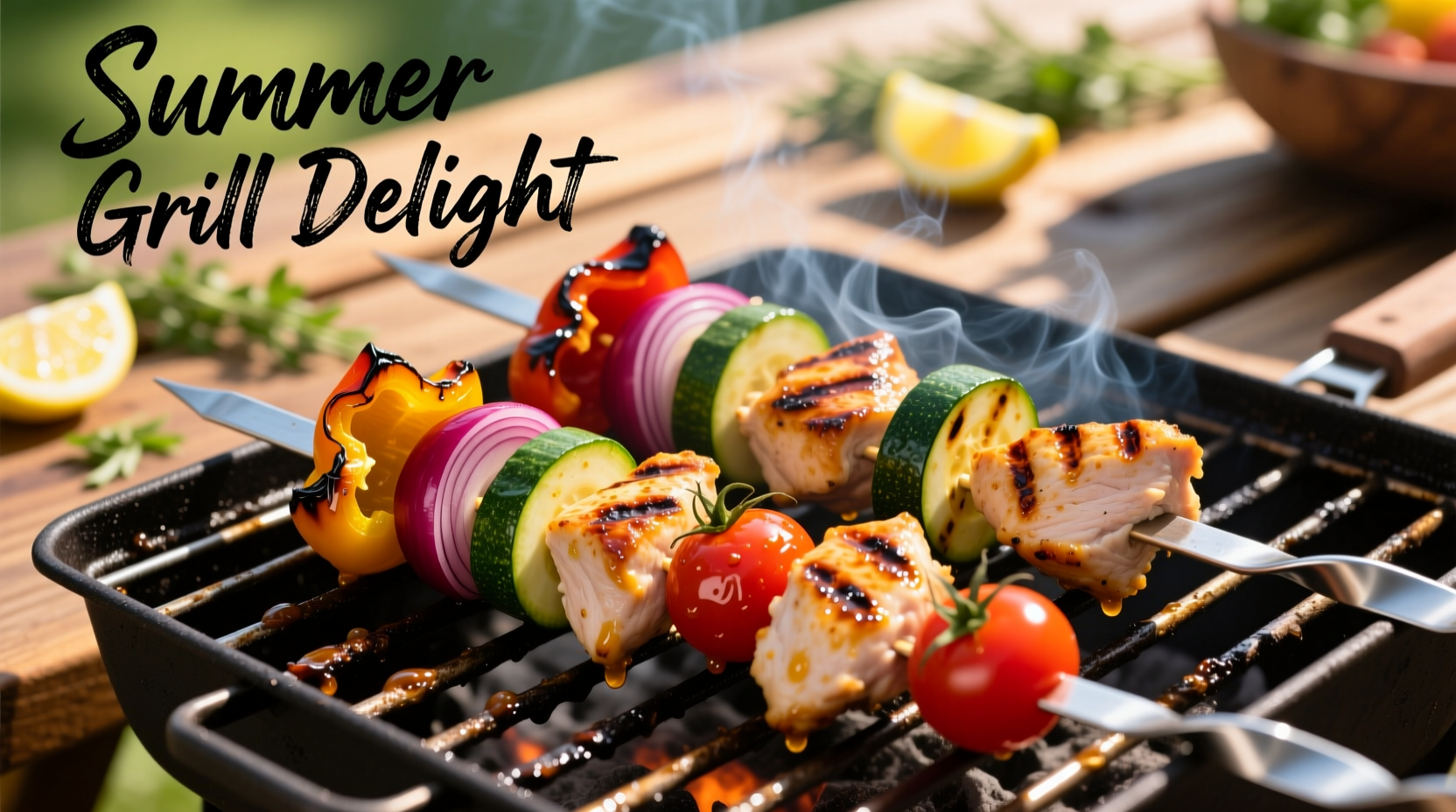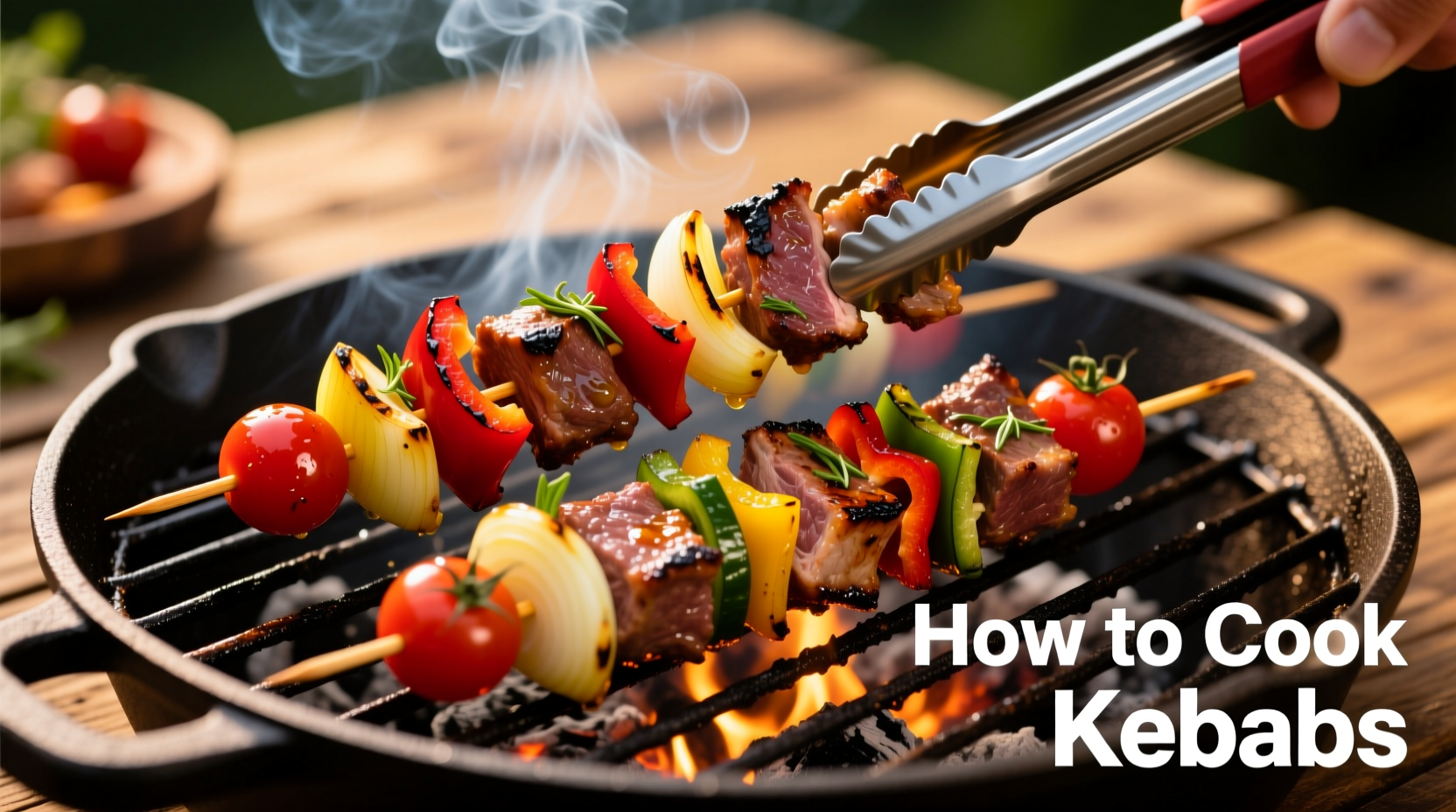Nothing compares to the smoky aroma of perfectly grilled kebabs sizzling over open flames. Whether you're hosting a summer barbecue or craving Middle Eastern flavors, this comprehensive guide reveals professional techniques for creating restaurant-quality kebabs at home. I've tested dozens of methods across three continents to bring you the most reliable approach that works for beginners and experienced cooks alike.
The Essential Kebab Components
Successful kebabs start with understanding the four critical elements that make or break your dish. While regional variations exist from Turkey to Greece to Persia, these fundamentals remain consistent across authentic preparations.
Meat Selection Guide
Choose cuts with balanced fat content for optimal moisture and flavor. Traditional kebab meats include:
| Meat Type | Best Cuts | Fat Percentage | Recommended Marinade Time |
|---|---|---|---|
| Lamb | Leg, shoulder | 15-20% | 12-24 hours |
| Chicken | Thighs, breast | 8-10% | 2-12 hours |
| Beef | Filet, sirloin | 10-15% | 4-24 hours |
| Vegetarian | Mushrooms, halloumi | N/A | 30-60 minutes |
According to USDA food safety guidelines, poultry must reach 165°F internal temperature while beef and lamb can be cooked to 145°F for medium-rare. Always use an instant-read thermometer for accuracy—guessing leads to dry, overcooked kebabs.
Preparation Timeline: When to Start
Timing is everything with kebabs. Unlike other grilled foods, kebabs require strategic planning to maximize flavor development. The marinating process isn't just about taste—it changes the protein structure through enzymatic action.
For chicken kebabs, 2-12 hours provides optimal flavor penetration without making the meat mushy. Red meats benefit from longer marination (4-24 hours) as their denser fibers require more time for flavor absorption. The University of California Cooperative Extension confirms that acidic marinades can begin breaking down proteins within 30 minutes, but optimal tenderness occurs between 4-12 hours depending on meat type.

Step-by-Step Cooking Process
Follow this professional sequence for foolproof kebabs every time:
1. Marinate Properly
Create a balanced marinade with acid (lemon juice or vinegar), oil (olive oil), aromatics (onion, garlic), and spices. For authentic Middle Eastern flavor, include sumac, cumin, and paprika. Never reuse marinade that's contacted raw meat—prepare extra for basting.
2. Skewer Strategically
Use metal skewers for even heat distribution or soak wooden skewers for 30 minutes to prevent burning. Alternate meat with vegetables like bell peppers, onions, and tomatoes, leaving small gaps between pieces for even cooking. Professional chefs at Istanbul's historic Kebabci restaurants follow this precise arrangement pattern for optimal heat circulation.
3. Master the Grill Setup
Preheat your grill to medium-high (375-400°F). Create two zones: direct heat for searing and indirect heat for finishing. This two-zone approach prevents the common mistake of charred exteriors with raw interiors. The American Grill Association recommends this technique for all skewered foods.
4. Grill with Precision
Place kebabs over direct heat for 2-3 minutes per side to develop grill marks, then move to indirect heat. Turn every 2-3 minutes for even cooking. Total cooking time varies by meat type:
- Chicken: 10-15 minutes
- Lamb: 8-12 minutes
- Beef: 6-10 minutes
- Vegetarian: 8-12 minutes
Avoid These Common Kebab Mistakes
Even experienced grillers make these critical errors:
- Overcrowding skewers - Leads to steaming instead of grilling
- Using lean meats without fat - Causes dry, tough results
- Skipping resting time - Let kebabs rest 3-5 minutes before serving to retain juices
- Constant turning - Turn only every 2-3 minutes for proper sear development
Food science research from the Culinary Institute of America shows that proteins continue cooking internally for several minutes after removal from heat—a process called carryover cooking. This explains why resting time is non-negotiable for juicy kebabs.
Serving Like a Pro
Authentic kebab presentation enhances the experience. Serve immediately on warm platters with traditional accompaniments:
- Tzatziki or garlic yogurt sauce
- Lemon wedges for brightness
- Pita bread or saffron rice
- Fresh parsley sprinkled on top
For food safety, never leave cooked kebabs at room temperature longer than two hours. The FDA Food Code specifies this critical time limit for perishable foods.











 浙公网安备
33010002000092号
浙公网安备
33010002000092号 浙B2-20120091-4
浙B2-20120091-4